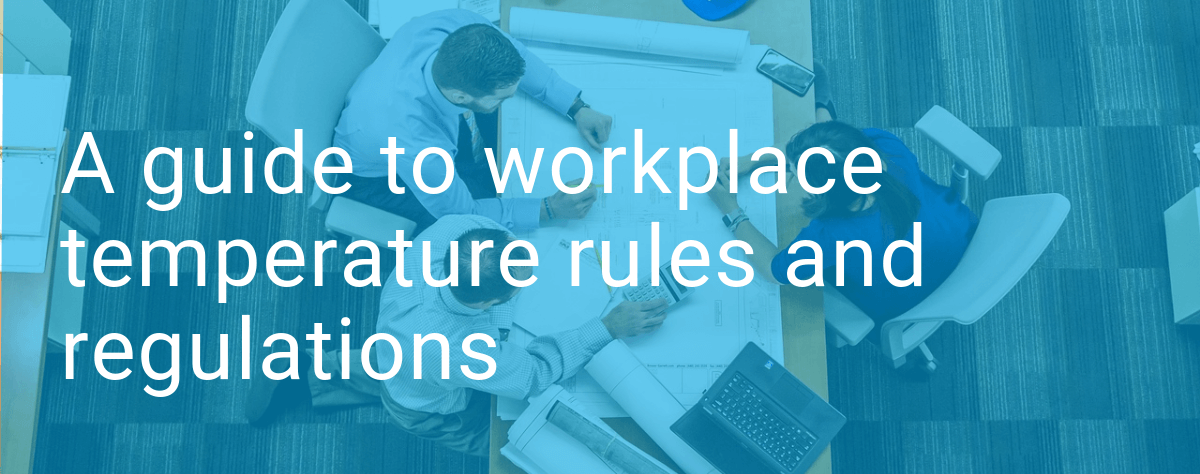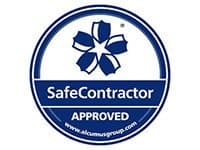
A Guide To Workplace Temperature Rules And Regulations
If your office is like a furnace in the summer and an ice box in the winter, you could be breaching government recommendations that are designed to keep your workforce safe and comfortable while they work.
As an employer it is your duty to ensure that your workspace offers the optimal environment for your employees and to ensure their ongoing wellbeing. You may be familiar with all of the health and safety rules and regulations you need to adhere to, but how much do you really know about workplace temperature rules and regulations in the UK?
As a leading provider of commercial air conditioning in Bristol and across the South West, here are some basic guidelines for you to consider:
What does the law say about working temperatures?
The Workplace (Health, Safety and Welfare) Regulations 1992 lay down particular requirements for most aspects of the working environment. Regulation 7 deals specifically with the temperature in indoor workplaces and states that:
‘During working hours, the temperature in all workplaces inside buildings shall be reasonable.’
This means that at the very least, you are required to:
- Keep the temperature at a comfortable level
- Providing clean and fresh air
Another key point of the law is that employers need to have a risk assessment for health and safety. This looks at the possible risks and hazards within the property including the upper and lower temperatures and covers what needs to be done to combat this. The process is slightly different if you have staff working outdoors.
Overall, there are lots of factors that come into how temperature affects people. Weight, age and sex of the person play a part, as does the work they are doing. HSE recommends that employers should aim for 80% of staff to be at a comfortable temperature.
Minimum and maximum temperatures
Under the regulations, there is no specific figure given for minimum or maximum temperatures because there are lots of factors that can come into it. The nature of the work being done is one example. The equipment in use around the workplace is another factor.
Generally, workrooms should be at least 16° but this isn’t a set in stone figure. It is down to the employer to decide what is a comfortable and sensible temperature for their workplace based on what staff are doing and what equipment is operating. Therefore, an office where people are largely stationary would have a higher temperature requirement than a factory floor with lots of heat-generating equipment and physical activity.
Employers should aim to keep the temperature at around 16°C or a slightly cooler 13°C if much of the work involves rigorous physical effort. The absence of a maximum figure is due to the fact that some workplaces are expected to operate at high temperatures all year round, like glass works or foundries for example.
In these kinds of environments it is still possible to work safely provided appropriate controls are present that take into account air temperature and humidity.
Thermal comfort
Thermal comfort is a phrase used to describe when someone feels either too hot or too cold. There are a few factors in the workplace that can influence these feelings:
- Humidity and sources of heat
- Clothing and other personal factors
- Physical demands of the work being done
Therefore, thermal comfort uses a number of factors to decide what is right, not just the temperature of the room. Plus, there are personal variations – some people naturally feel warmer or colder than others so it can be tricky to achieve that balance where everyone is at a perfect temperature.
Warm Weather Dress Code
Another consideration can be how to approach the dress code in warm weather. For some businesses, it isn’t practical to change the dress code as it may include safety equipment. For others, it may be difficult to permit different types of clothing due to increasing other safety risks. However, there are some types of business where a relaxed dress code in particularly warm weather can help with thermal comfort.
What Is a Reasonable Temperature?
A reasonable temperature for a workplace depends on work activity and the environmental conditions of the workplace. Employers should carry out a thermal comfort risk assessment and compile a heat stress checklist in the first instance. If the results indicate the working temperatures are not within reasonable levels, it is the duty of the employer to implement appropriate controls. This could mean installing either an air conditioning system, or upgrading or replacing current central heating measures.
If the workforce is required to wear personal protective equipment, they are more likely to fall victim to heat stress and suffer from the adverse effects of high temperatures. In this instance, employers should implement further measures including allowing work to take place at a slower rate, rotating staff on a short shift basis and allowing workers to take longer breaks in cooler, air-conditioned environments.
Why Temperature Control is so Important at Work
Working in an office, warehouse or any other workspace that is too hot or too cold can be detrimental to productivity and can lead to dissatisfaction amongst the workforce. This can be an ongoing inconvenience that could easily be avoided by the implementation of effective cooling or heating measures.
Workplace temperature may seem one of those issues that everyone argues over but isn’t actually that important. However, there are some very serious side effects from being either too cold or too hot and this is why it is something that employers need to manage.
Being too cold
Being too cold at work is very uncomfortable and causes the body to limit blood supply to the extremities which is why people often complain about their hands being too cold to work. In the most extreme cases, this leads to things like chilblains and white finger – frostbite is the far end of the spectrum and can lead to permanent damage.
If temperatures are dangerously low, there is a risk of accidents due to numbness in limbs or even slipping on ice. Hypothermia is the loss of consciousness due to the cold and can even lead to death.
While it is unlikely that a workplace would get cold enough for things like frostbite, the pain of cold hands and limbs due to the lower temperature is very real and means people cannot do their job properly.
Being too hot
In general, if we are too hot, we feel tired and less energetic which reduces productivity and means we get less done. It can also lead to heat cramps in muscles and puts a strain in the heart and lungs. It is common to lose concentration if you are too hot which puts you at risk of accidents.
Heat exhaustion is where you are exposed to heat for a prolonged period of time. Symptoms can include feeling ‘flushed’ where your skin is very hot, sweating, dizziness and feeling very tired. It can also lead to things like feeling sick and confused. In some cases, it can lead to heatstroke.
Heatstroke is a potentially serious condition that happens when you are exposed to a high temperature for a prolonged period. The body cannot cool itself down and becomes dehydrated, unable to produce sweat. Other symptoms include rapid breathing and heartbeat and muscle cramps as well as confusion, lack of coordination and even unconsciousness.
Again, it is unlikely that an indoor workplace would become so hot for so long that heatstroke is an issue. But the tiredness and loss of energy experienced even at higher than normal temperatures can be a serious enough issue to warrant monitoring.
Setting a happy medium
It is beneficial for employers to negotiate agreements on the temperature within the workplace with employees. The first step is to carry out a formal risk assessment. Then it can be a good idea to sit down with staff and agree on a joint policy that includes areas such as:
- Minimum and maximum workplace temperatures
- A definition of what is reasonable and adequate for the number of people working, the building and the equipment being used as well as the type of work
- What happens if there is a change in the weather
- What happens if the minimum or maximum temperature isn’t maintained such as relaxing the dress code or using extra equipment to heat or cool the building
- Can staff become flexible about their working arrangements if the minimum or maximum temperatures are reached
By laying out the policy and having staff agree to it, employers are covering much of their requirement to offer a ‘reasonable’ workplace temperature. It also allows them to cover the possibilities of weather-induced higher or lower temperatures and how this will be handled.
As part of the agreement, it is often worth having a heating and ventilation engineer inspect the property and the systems in place to ensure they are adequate and suitable for the purpose required.
Commercial Air Conditioning in Bristol
Ensure productivity, job satisfaction and the ongoing health of your staff by installing a cost-effective, energy efficient air conditioning system in your workplace. Speak to Total Environmental Kooling today on 0117 952 3355 to see how we can help.






